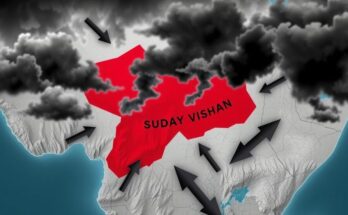The conflict in the DRC is heavily tied to tantalum used in smartphones, with the M23 rebel group controlling key mining areas. Tantalum is critical for electronics. Efforts to regulate conflict minerals face challenges, raising ethical concerns as the group profits from mining operations amidst ongoing violence and political complexities.
The Democratic Republic of Congo (DRC) is currently embroiled in conflict, substantially linked to the tantalum used in millions of smartphones. This rare metal, found in small quantities within devices, is primarily sourced from mineral-rich eastern DRC, where the M23 rebel group is active. The unique properties of tantalum allow it to play an essential role in the functioning of electronic devices due to its ability to efficiently store energy.
M23 has expanded its control over key mining areas, including Rubaya, a hub for coltan mining. Originally formed to defend the rights of an ethnic group, the M23 has turned to mining as a significant income source for funding its rebellion. The group has established a tight hold on the mining operations, imposing taxes and ensuring that only its authorized traders conduct business in Rubaya.
Mineral extraction in DRC predominantly involves small-scale miners working under dire conditions, rather than multinational corporations. The M23 has implemented a “state-like administration,” regulating the miners and extracting substantial revenue from coltan taxation. It is estimated that the group generates around $800,000 monthly from coltan-related taxes, which presumably finance their operations.
Concerns regarding the traceability of coltan from conflict zones to global supply chains continue to rise. Although efforts have been made, such as the Innovative Tin Supply Chain Initiative (Itsci) and legislation in both the United States and the European Union, oversight remains weak. Expert Ken Matthysen points to difficulties in monitoring dispersed small mines and corruption in the tagging process intended to certify the ore’s origins.
The UN experts indicate that the uncertified coltan from M23 territories often gets mixed with Rwandan production, complicating efforts to ensure ethical sourcing. Rwanda supports various coltan mining operations, which have reportedly profited from the instability in DRC. The increase in Rwanda’s coltan exports raises questions about the true source of the minerals in their supply chains.
Both the Congolese and Rwandan governments present contrasting narratives regarding this complex situation. The Congolese government has taken legal action against technology giants like Apple for allegedly utilizing conflict minerals, prompting Apple to halt sourcing tantalum from DRC due to certification challenges. Nevertheless, other tech companies continue to face scrutiny as the conflict enables tantalum from M23-controlled areas to infiltrate global markets.
In summary, the ongoing conflict in the Democratic Republic of Congo is intrinsically linked to the mining and trade of tantalum, essential for modern smartphones. The M23 rebel group has exploited this resource, generating substantial revenue that funds their activities while the origin and ethics of coltan supply chains remain contentious. Efforts to regulate and certify conflict minerals have encountered significant challenges, raising concerns for consumers about the sources of materials in their electronics.
Original Source: www.bbc.com




